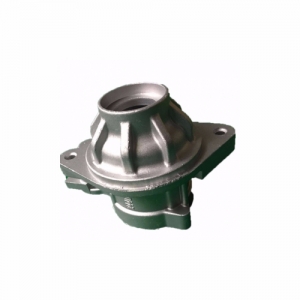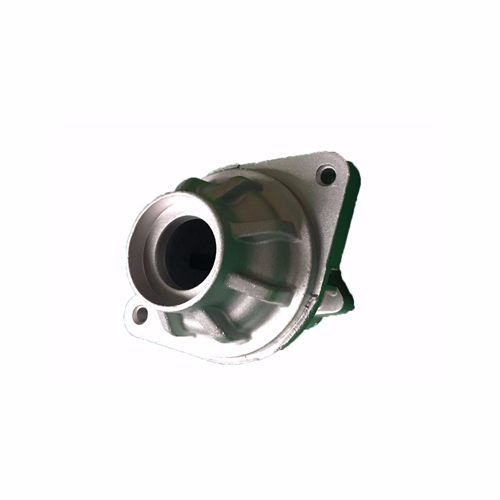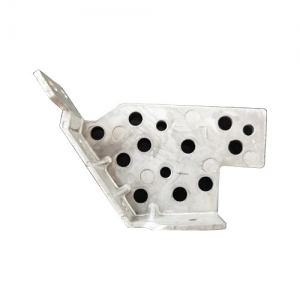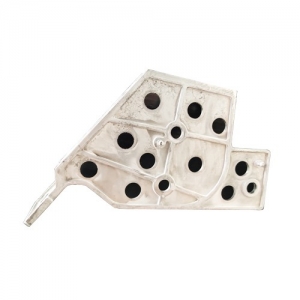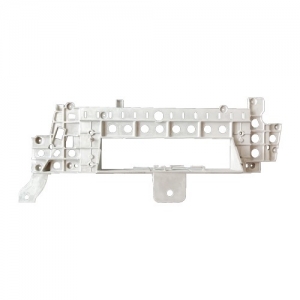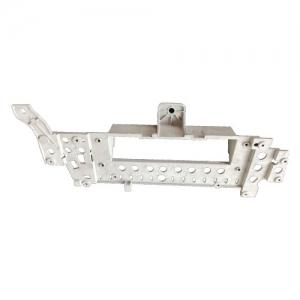Aluminum alloy die casting
- Product classification:Car parts
- product labeling:Aluminum alloy die casting
- Times of browsing:Already1516Customer focus
Aluminum alloy die casting manufacturers
Aluminum alloy die-casting parts have advantages over other castings, such as aesthetics, light weight and corrosion resistance, which make them popular among users. Especially since the lightweight of automobiles, cast aluminum alloy castings have been obtained in the automotive industry. A wide range of applications.
Cast aluminum alloys have a lower density than cast iron and cast steel, but have a higher specific strength. Therefore, the use of aluminum alloy castings under the same load conditions can reduce the weight of the structure, so aluminum alloy castings are widely used in the aviation industry and power machinery and transportation machinery manufacturing. Aluminum alloy has a good surface gloss and good corrosion resistance in the atmosphere and fresh water, so it has a wide range of applications in the manufacture of civilian utensils. Pure aluminum has good corrosion resistance in oxidizing acid media such as nitric acid and acetic acid, so aluminum castings have certain applications in the chemical industry. Pure aluminum and aluminum alloys have good thermal conductivity, heat exchange devices used in chemical production, and parts requiring good thermal conductivity on power machinery, such as cylinder heads and pistons of internal combustion engines, etc. Manufacturing.
Aluminum alloy has good casting properties. Since the melting point is low (the melting point of pure aluminum is 660.230C, the casting temperature of aluminum alloy is generally about 730-750oC), casting methods such as metal type and pressure casting can be widely used to improve the intrinsic quality, dimensional accuracy and surface of the casting. Smoothness and productivity. Due to the large latent heat of solidification, the solidification process of aluminum liquid lasts much longer than that of cast steel and cast iron under the same weight conditions, and the fluidity is good, which is beneficial to casting thin-walled and complex castings.
Casting aluminum alloy castings has many advantages, making it the development direction of the foundry industry and one of the most favored casting products for purchasing customers. In the future, with the advancement of aluminum alloy casting technology, it will show its own on a larger stage. Style.
Analysis of problems urgently needed to be solved in the future development of domestic aluminum alloy casting industry
Reducing energy consumption, reducing environmental pollution and conserving limited resources are a very important and urgent task facing countries today. Driven by the general trend of lightweight products such as automobiles, it can be expected that in the next 10 years, China's light metal castings market will have a substantial development. The proportion of aluminum and magnesium alloy castings in each casting country is between 13% and 19%. In some countries (such as Italy), it is as high as 30% to 40%, while the proportion of aluminum and magnesium alloy castings in China is not. To 10%. More than 90% of aluminum castings in developed countries are used in automobile parts manufacturing. In China, there are still many problems to be solved in order to form large-scale production of aluminum alloy castings and to meet the requirements of lightweight vehicles. First, the requirements for automotive aluminum castings are Thin wall, complex shape, high strength, high quality direction. To meet this requirement, the casting process should be further optimized and new alloy materials developed. Second, production costs should be reduced from a design and process perspective, such as the use of multiple-piece technology and automation to increase productivity, extend tool life, and reduce the number of parts with an integrated design. Third, the use of computer simulation technology to shorten the development cycle of the process plan. Fourth, increase the recovery of aluminum. Recycled aluminum is the main raw material for aluminum casting. China should pay attention to the utilization of recycled aluminum resources while developing the foundry industry, develop technology for efficient separation of aluminum from waste materials of composite materials and dissimilar materials, and establish a wide-scale waste recycling system.
Previous page:Magnesium alloy die casting
next page:Aluminum alloy die casting

